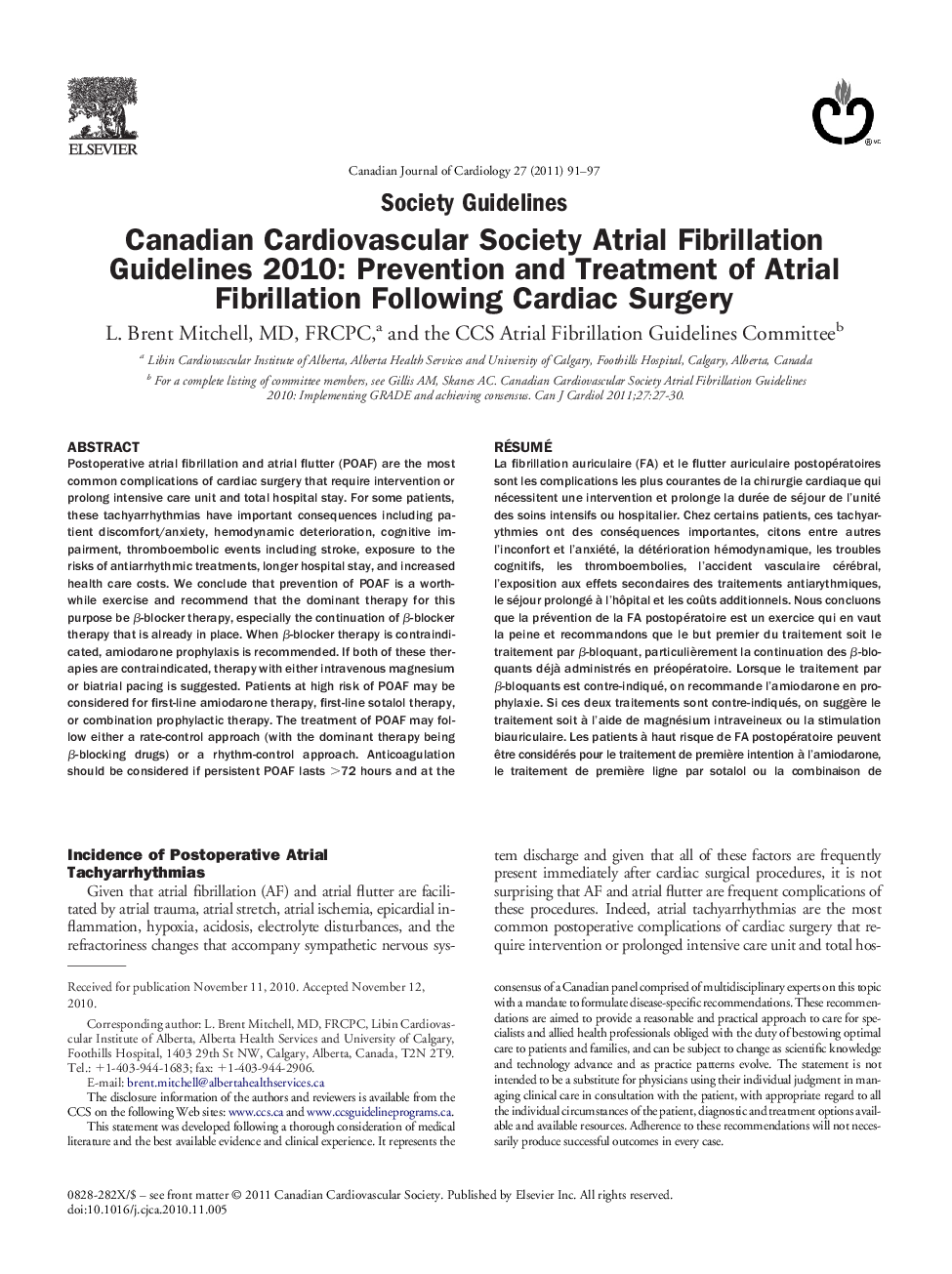| Article ID | Journal | Published Year | Pages | File Type |
|---|---|---|---|---|
| 2732365 | Canadian Journal of Cardiology | 2011 | 7 Pages |
Postoperative atrial fibrillation and atrial flutter (POAF) are the most common complications of cardiac surgery that require intervention or prolong intensive care unit and total hospital stay. For some patients, these tachyarrhythmias have important consequences including patient discomfort/anxiety, hemodynamic deterioration, cognitive impairment, thromboembolic events including stroke, exposure to the risks of antiarrhythmic treatments, longer hospital stay, and increased health care costs. We conclude that prevention of POAF is a worthwhile exercise and recommend that the dominant therapy for this purpose be β-blocker therapy, especially the continuation of β-blocker therapy that is already in place. When β-blocker therapy is contraindicated, amiodarone prophylaxis is recommended. If both of these therapies are contraindicated, therapy with either intravenous magnesium or biatrial pacing is suggested. Patients at high risk of POAF may be considered for first-line amiodarone therapy, first-line sotalol therapy, or combination prophylactic therapy. The treatment of POAF may follow either a rate-control approach (with the dominant therapy being β-blocking drugs) or a rhythm-control approach. Anticoagulation should be considered if persistent POAF lasts >72 hours and at the point of hospital discharge. The ongoing need for any POAF treatment (including anticoagulation) should be reconsidered 6-12 weeks after the surgical procedure.
RésuméLa fibrillation auriculaire (FA) et le flutter auriculaire postopératoires sont les complications les plus courantes de la chirurgie cardiaque qui nécessitent une intervention et prolonge la durée de séjour de l'unité des soins intensifs ou hospitalier. Chez certains patients, ces tachyarythmies ont des conséquences importantes, citons entre autres l'inconfort et l'anxiété, la détérioration hémodynamique, les troubles cognitifs, les thromboembolies, l'accident vasculaire cérébral, l'exposition aux effets secondaires des traitements antiarythmiques, le séjour prolongé à l'hôpital et les coûts additionnels. Nous concluons que la prévention de la FA postopératoire est un exercice qui en vaut la peine et recommandons que le but premier du traitement soit le traitement par β-bloquant, particulièrement la continuation des β-bloquants déjà administrés en préopératoire. Lorsque le traitement par β-bloquants est contre-indiqué, on recommande l'amiodarone en prophylaxie. Si ces deux traitements sont contre-indiqués, on suggère le traitement soit à l'aide de magnésium intraveineux ou la stimulation biauriculaire. Les patients à haut risque de FA postopératoire peuvent être considérés pour le traitement de première intention à l'amiodarone, le traitement de première ligne par sotalol ou la combinaison de traitements prophylactiques. Le traitement d'une FA postopératoire peut suivre soit une méthode de ralentissement de la fréquence ventriculaire (avec les β-bloquants) ou une méthode de stabilisation du rythme. Les anticoagulants devraient être considérés si la FA postopératoire dure plus de 72 heures et si elle est encore présente au moment de prendre congé de l'hôpital. Le besoin continu de traitement d'une FA postopératoire (notamment l'anticoagulation) devra être reconsidéré pour 6 à 12 semaines suivant la procédure chirurgicale.
